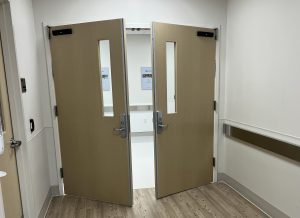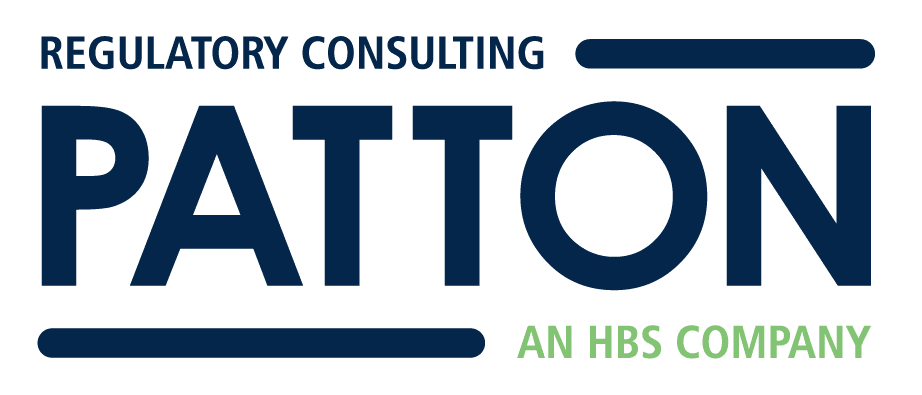May 2025
Inside This Issue
 Cardiac and Stroke Certification Eligibility Updates:
Cardiac and Stroke Certification Eligibility Updates:
It was a fairly quiet month for TJC relative to new announcements and new requirements. The May issue of Perspectives does describe some volume eligibility requirements for certifications that were simplified. The Comprehensive Cardiac Center, Comprehensive Heart Attack Center, and the Primary Heart Attack Center programs will no longer have a volume requirement for percutaneous coronary intervention. The Comprehensive Stroke Center program will lower their volume requirement for treatment of subarachnoid hemorrhage due to aneurysm from 20 cases to 10 per year. These changes were done in conjunction with the American Heart Association and American Stroke Association and should expand eligibility for these certification programs.
Time Outs Prior to Invasive Procedures:
 This month’s Consistent Interpretation column discusses the universal protocol requirement for a time out prior to an invasive procedure (UP.01.03.01, EPs 1,2,3,5). The frequency of scoring the first EP, to conduct a time out, is pretty minimal with only 0.94%, with only 13 out of 1386 hospital surveys finding this EP noncompliant. There are some interesting guidance/interpretation notes that are not published in the standards manual, however.
This month’s Consistent Interpretation column discusses the universal protocol requirement for a time out prior to an invasive procedure (UP.01.03.01, EPs 1,2,3,5). The frequency of scoring the first EP, to conduct a time out, is pretty minimal with only 0.94%, with only 13 out of 1386 hospital surveys finding this EP noncompliant. There are some interesting guidance/interpretation notes that are not published in the standards manual, however.
For example, they state that “Procedures such as electroconvulsive therapy, external beam radiation and closed reduction are not considered invasive.” They also advise that acupuncture does not automatically require a time out, except when organizational policy identifies it as invasive. Their guidance on procedures conducted by a single individual is less detailed or clear, requiring a pause by the practitioner and documentation of the pause as specified in organizational policy.
The only EP with a significant amount of scoring is EP 2, where 10% of hospitals surveyed were identified as noncompliant. This is the EP that requires all of the staff involved in a procedure to pay attention and participate in the time out. Inattentiveness, or staff continuing to work through the timeout is a common problem.
The guidance/interpretation section provided for EP 3, actually provides meaningful insight to compliance with EP 2 relative to establishing some affirmative response from staff participating in a time out, such as a “verbal response or gesture of affirmation such as head nod, raised hands, or fist to five” techniques. Inattentiveness, if it occurs, is usually pretty obvious as that staff person is often moving around preparing for the case, or reviewing notes, while others are participating in the affirmative time out.
 Guidance on Opening Protectives:
Guidance on Opening Protectives:
EC News has a very informative article on what are called “opening protectives.” These are the openings such as a door that exists in a fire barrier, or a smoke barrier. One key piece of information is a comment that TJC is seeing some building drawings that identify a “smoke/fire” barrier on the drawings. This method of identification is insufficient as it must be clear which is a smoke and which is a fire barrier, as they have different requirements.
The article then details the requirements for fire resistance ratings on those smoke doors or fire doors. Smoke doors for new construction built or plans approved after July 5, 2016, must have a 1-hour fire resistance rating. These smoke doors must be self-closing or automatic closing but are not required to be self-latching. However, if the smoke door has a latching mechanism, it must work and be maintained, or it must be removed. These smoke doors should be constructed using 1 ¾ inch or thicker solid, bonded, wood core and be rated for a minimum of 20 minutes and resist the passage of smoke.
Fire barriers may be rated for 1, 2, or 3 hours and the doors in such barriers have different requirements. The 1-hour barrier requires at least a 45-minute fire door. The 2-hour barrier requires at least a 90-minute door, and the 3-hour barrier requires at least a 3-hour rated door. These fire doors do need a self-latching mechanism and must be inspected annually.
As imperfections in building drawings and door operations are commonly found on survey, we would suggest using this article as an opportunity to self-assess and validate compliance. We suggest the following points of analysis:
- Do our building drawings identify and differentiate fire barriers from smoke barriers?
- Can we identify the rating of each barrier and follow where each barrier goes or extends?
- How many fire doors do we have on inventory, and do we have an inspection of each that was conducted within the last 12 months?
- What is the process to identify proper operation of and latching of fire doors between annual inspections? Is the sample size from internal inspections sufficient to maintain proper functioning?
- Were we scored noncompliant on fire or smoke door issues in the past 6 years? If scored noncompliant, what additional inspection, documentation and reporting processes have been implemented to prevent another lapse?
- Are the rating labels on each door visible and sufficiently legible to determine the actual rating of each door, or are any painted over?
Inspecting fire doors sounds like it should be easy, but there are many specific issues to evaluate during these inspections. We suggest taking a look at some of the many YouTube videos that are available by searching for “hospital fire door inspections.” There are many details to the inspection process that need to be evaluated.
 Time Limited Waivers and Equivalencies:
Time Limited Waivers and Equivalencies:
The May issue of EC News has a Q+A article on time limited waivers and equivalencies, which is an issue most readers probably don’t remember all the details about on how to apply for, or when you might need either a TLW or equivalency. This article helps to explain that when you are cited for a previously unidentified or newly created EC or LS deficiency that cannot easily and swiftly be corrected there are techniques you can use such as a time limited waiver, or an equivalency.
A time limited waiver simply buys you more time to make the necessary corrective actions. An equivalency actually mitigates the potential defect by using other physical features of the building to eliminate the risk from the identified deficiency. There are then two types of equivalencies
- The traditional equivalency verified by a registered architect, fire safety professional or fire marshal.
- A fire safety evaluation system that evaluates the entire building and its features to overcome the deficiency.
 If you need to apply for one of these time limited waivers, you must do so within 30 days of your survey, don’t wait until your 60-day ESC period is almost over. In addition, if you are using your accreditation for CMS deemed status purposes, TJC will involve the CMS regional office in the evaluation and potential approval of your waiver request.
If you need to apply for one of these time limited waivers, you must do so within 30 days of your survey, don’t wait until your 60-day ESC period is almost over. In addition, if you are using your accreditation for CMS deemed status purposes, TJC will involve the CMS regional office in the evaluation and potential approval of your waiver request.
As organizations apply for these so infrequently, you may forget what has to happen and how to do it, when you need it. You might want to try and save this article, and in the article TJC advises that the tools needed to apply for a time limited waiver or equivalency are available on the extranet under the continuous compliance tab, statement of conditions, BBI section. You may also want to consider creating a policy or standard operating procedure to embed some of this guidance locally.
MRI Safety:
 The last article in EC News is about MRI safety. This had also been addressed in a TJC Quick Safety publication in 2022. While this article does not appear to identify new or additional potential problems in the MRI area, there is a helpful link provided to another of JCR’s checklist tools for self-assessment that may prove helpful.
The last article in EC News is about MRI safety. This had also been addressed in a TJC Quick Safety publication in 2022. While this article does not appear to identify new or additional potential problems in the MRI area, there is a helpful link provided to another of JCR’s checklist tools for self-assessment that may prove helpful.
![]() ACHC: Medical Staff Credentialing Webinar:
ACHC: Medical Staff Credentialing Webinar:
ACHC has a free webinar planned for June 3rd at 11am EDT, Medical Staff Credentialing: What’s the Big Deal? While they likely will discuss their standards, the standards tie back to CMS requirements and will be informative to all potential viewers regardless of accreditor currently used. Visit the link for additional information and to register for this webinar.
DNV: Healthcare University Dates:
 DNV has a 3-day program coming up in Atlanta, GA on June 24-26 they call their Healthcare University. There are multiple courses or tracks you can choose including operations, internal audit, cybersecurity, ISO and risk management or infection prevention. Visit the link for additional information and to register for this training event.
DNV has a 3-day program coming up in Atlanta, GA on June 24-26 they call their Healthcare University. There are multiple courses or tracks you can choose including operations, internal audit, cybersecurity, ISO and risk management or infection prevention. Visit the link for additional information and to register for this training event.
![]() Updates Likely Coming Soon:
Updates Likely Coming Soon:
There were no new QSO memos for any provider type posted from CMS during the month of April. Just like in healthcare settings, new leaders have new priorities, which we likely will learn in the coming months.
 Opioid Addiction Treatment:
Opioid Addiction Treatment:
In our March 2025 Patton Post newsletter, we discussed The Joint Commission’s reorganization of the Behavioral Health requirements for opioid addiction treatment. That publication appeared to be a significant simplification and reorganization of existing standards for opioid treatment.
In April, the HHS Inspector General published a report, Fewer than One in Five Medicare
Enrollees Received Medication to Treat Their Opioid Use Disorder, that discussed how few Medicare recipients with an opioid addiction are receiving treatment. They identified that fewer than 1/5 Medicare enrollees with an opioid use disorder are receiving treatment for that condition. It is apparent from this audit report that HHS would like to see more treatment provided now that prescribing has been simplified. Visit the link to access this OIG report.
 CONSULTANT CORNER
CONSULTANT CORNER
Leadership changes don’t have to cause disruption. Our experienced interim leaders are former C-Suite and senior administrative executives and are ready to step in and provide immediate support.
Our leaders have the skills and experience to drive your success. We can fulfill interim positions for:
– CEO, CNO, Chief Quality Officer
– Director of Quality, Risk Management, Accreditation
Thank You!
Jennifer Cowel, RN MHSA
JenCowel@PattonHC.com
Kurt Patton, MS RPh
Kurt@PattonHC.com
Julia Finken, RN, BSN, MBA, CPHQ
julia.finken@hbsinc.com
John Rosing, MHA
JohnRosing@PattonHC.com

